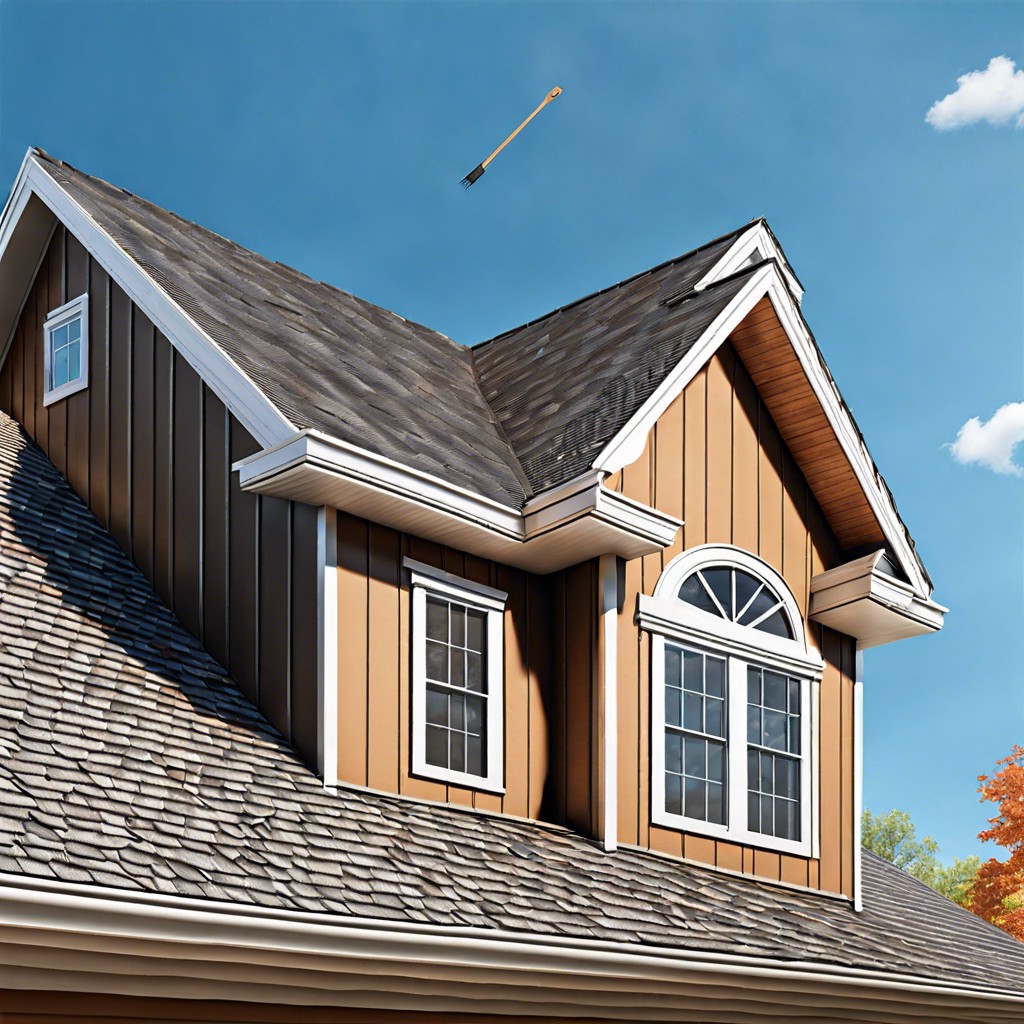Last updated on
Roofs in New Berlin are facing collapse because of a specific issue that we’re going to explore, dissect and address in this article.
The calamitous roof collapse in New Berlin serves as a stark reminder of nature’s force and the critical importance of building integrity. As heavy winter weather bears down, it brings with it the latent risk of structural failure, recently realized in this unfortunate event.
Following the collapse, rapid emergency response efforts were crucial in securing safety. Investigations conducted by inspectors and structural engineers delve into the myriad factors contributing to such failures, including material flaws, load capacity issues, construction shortcomings, and maintenance lapses.
This article provides an in-depth analysis of the cascade of effects stemming from the collapse, extending far beyond structural damage to include the substantial disruptions faced by businesses and occupants alike. It offers a comprehensive look at every angle of the event — from the initial weather conditions to the ongoing implications for all those affected.
Key takeaways:
- Unusually severe winter weather caused the roof collapse.
- Prompt emergency response actions included search and rescue operations.
- Inspectors investigated materials, load, construction, and maintenance for failure points.
- Structural engineers analyzed site, materials, load, design, and maintenance history.
- The collapse had significant operational and occupancy impacts on businesses.
Date and Location of New Berlin Roof Collapse

On March 12, 2023, a commercial building in the heart of New Berlin, Wisconsin experienced a dramatic roof collapse. The incident occurred on the 1500 block of South West Avenue, a bustling area known for its mix of retail and office spaces.
Local businesses and residents were affected, and the area was cordoned off to maintain public safety and allow for first responder access. The structure, a single-story building, was unoccupied at the time of the collapse, preventing any injuries.
Authorities were quick to respond to the scene, and the collapse did not result in any disruption to nearby roadways or utilities.
Overview of the Weather Conditions Leading to Collapse

Prior to the structural failure, the area was experiencing unusually severe winter weather. Heavy snowfall had accumulated on the roof, considerably exceeding typical seasonal averages.
This buildup of wet, dense snow significantly increased the load on the roof’s structure. Additionally, a sharp drop in temperatures following the snowfall may have contributed to the formation of ice, compounding the weight burden.
It’s important to note that rooftops have load limits; surpassing these can lead to stress on trusses and support systems. In this instance, the sheer volume of snow coupled with its prolonged presence likely compromised the roof’s integrity, leading to the eventual collapse.
Emergency Response Actions During the Incident
Upon the roof’s collapse, first responders were quickly dispatched to the scene, prioritizing the safety of the occupants. Their prompt actions included:
- 1. Establishing a secure perimeter to prevent additional injuries from potential secondary collapses or other hazards.
- 2. Conducting an immediate search and rescue operation to locate and assist any individuals who might be trapped or injured within the debris.
- 3. Evaluating the structural integrity of the remaining sections of the building to ensure the safety of the rescue teams.
- 4. Collaborating with utility companies to shut off gas, electricity, and water to the building to mitigate the risk of fires or floods.
- 5. Implementing traffic control measures around the area to facilitate emergency vehicle access and to protect bystanders.
- 6. Coordinating with local health services to provide medical attention to the injured and to establish triage units if necessary.
The swift, coordinated efforts of the emergency teams ensured that the situation was contained, and risks to the public were minimized.
Investigation Into the Roof Collapse By New Berlin Inspectors
Following the roof collapse, a detailed inspection was undertaken to ascertain the exact failure points. New Berlin inspectors, along with structural engineers, combed through the wreckage to identify weaknesses in the roof’s design, construction, and maintenance history.
Key Focus Areas of the Inspection:
- Material Examination: Inspectors examined the roofing materials for signs of deterioration or substandard quality that might have contributed to the collapse.
- Load Analysis: The team evaluated whether the roofing structure met the appropriate load-bearing standards and if excess snow or water accumulation caused an overload.
- Construction Review: A close review of the building’s construction records helped determine if the roof was built according to code and if any modifications impacted its integrity.
- Maintenance Records Scrutiny: Inspectors assessed the maintenance logs to check for regular inspections and repairs that may have been overlooked or delayed.
Findings from the investigation will directly inform remedy strategies and help refine preventive measures to forestall similar incidents in the future.
Role of Structural Engineers in Determining the Cause
Structural engineers play a crucial part in unveiling the specifics behind the roof collapse. Their expertise helps us grasp the technical aspects of why the structure failed.
Here’s a snapshot of their key responsibilities in the investigation process:
- Site Examination: Engineers carefully survey the wreckage to document patterns of failure which can be tell-tale signs of specific structural weaknesses.
- Material Analysis: Samples of building materials are tested to check for deterioration or substandard quality that may have contributed to the collapse.
- Load Assessment: They evaluate whether the roof was bearing more weight than it was designed to handle, which could include snow, water accumulation, or additional equipment.
- Design Review: A thorough audit of the building’s design and blueprints ensures that the roof met all relevant engineering standards.
- Maintenance History: Reviewing the maintenance records can reveal if neglect or inadequate upkeep played a role.
- Expert Testimony: Engineers often provide detailed reports or testify about their findings, which can be essential for insurance claims or legal matters.
By decrypting the collapse through a scientific lens, structural engineers offer critical insights that contribute to preventing future failures and enhancing building safety standards.
Impact of Collapse On Building Operations and Occupancy
The roof collapse halted all activities within the affected building, necessitating an immediate evacuation to ensure the safety of occupants. Here are key considerations regarding the incident’s operational impact:
– Temporary Closure: Businesses located within the structure faced a compulsory pause, affecting both employees and clientele. Service interruptions and disruptions in daily operations were inevitable during the post-collision assessment and immediate recovery period. – Relocation Challenges: For entities requiring physical space, finding alternative locations was a top priority. This posed logistical challenges, particularly for organizations with specialized equipment or fixed customer bases. – Permits and Authorizations: Before resuming operations, building permits and clearance from local safety authorities were mandatory. These processes safeguard against potential hazards but also lead to further delays in normal business resumption. – Long-Term Impact: Depending on the extent of the damage and the duration of the repair process, some businesses might consider permanent relocation, reevaluation of their operational model, or even, regrettably, closure. – Occupancy Restrictions: Future occupancy regulations may be modified to reduce building load or modify usage patterns, with potential implications for space allocation and layout adaptations.The profound effects of the collapse will ripple through business operations and occupancy until the complete restoration of the building.
Safety Measures and Precautions for Heavy Rain Forecast
In light of heavy rain forecasts, building owners should prioritize regular roof inspections. These inspections are crucial in detecting potential weaknesses or damages that may not be visible from the ground. It’s recommended to clear gutters and downspouts to ensure proper drainage; this prevents water accumulation that could add undue weight and stress to the roof structure.
Additionally, securing loose items on the roof such as HVAC units or debris can prevent damage during high winds and heavy downpours.
Strategically placed water barriers and proper landscaping can direct water away from the foundation, mitigating the risk of flooding and water damage. Finally, revisiting the roofing materials used is prudent—some materials are more resilient in the face of heavy precipitation. It’s essential to consider these preventive measures, as they can significantly decrease the risk of a roof collapse under extreme weather conditions.
Review of Building Codes and Standards Compliance
In light of the New Berlin roof incident, scrutiny on building codes and standards compliance is essential to understand potential oversights and prevent future failures. Here are key points to consider:
- Building Code Review: Investigation often starts with a review of the relevant local building codes at the time of construction, ensuring the design met the required safety margins for loads, including snow or water accumulation.
- Material Analysis: Inspectors assess whether appropriate materials were used according to the codes and if substandard materials could have contributed to the roof’s vulnerability.
- Construction Practices: Compliance extends to the construction practices employed. Any deviation from approved methods could compromise a roof’s integrity.
- Maintenance Records: Regular maintenance is crucial to uphold the performance of any structure. Examining maintenance logs can reveal if neglect played a role in the roof’s collapse.
- Historical Code Changes: It’s useful to compare the codes in place at the time of construction with current standards, which may have evolved to incorporate advanced safety features.
- Certification and Permits: Ensuring that all construction and renovation work was performed with the necessary permits and by certified professionals is part of the compliance check.
Understanding these factors helps pinpoint responsibility, improves future compliance, and enhances overall safety.
Community Response and Support Following the Incident
In the wake of the roof collapse, the outpouring of solidarity was a silver lining for all affected. Local businesses rallied to provide essentials, from temporary storage spaces to helping hands for clean-up efforts.
Volunteer groups organized fundraisers to aid in covering unexpected costs for those hardest hit. The immediate mobilization of the community highlighted the strong spirit of resilience and neighborly support.
Churches and community centers opened their doors to host gatherings and coordinate volunteer activities, reinforcing the crucial role these institutions play during times of crisis. Social media platforms served as vital hubs for information sharing and mobilizing resources, demonstrating the power of digital connectivity in real-world disaster response.
Through these concerted efforts, the foundation for recovery was set, and the strength of the community shone through the adversity.
Timeline for Repair and Reconstruction Efforts
After the initial assessment and securing of the site, a repair and reconstruction timeline can be established. Here are the key phases:
1. Cleanup Phase: This begins immediately post-collapse, often taking several days to weeks depending on the scale of debris and site hazards.
2. Design and Planning: Concurrent with cleanup, architects and engineers will plan the repair, which may span a few weeks to several months to ensure compliance with building codes.
3. Permitting Process: Submitting plans to city officials and obtaining necessary permits is a critical administrative step which may add weeks to the timeline.
4. Contractor Selection: Choosing a qualified contractor experienced in this type of repair work can affect efficiency and quality of the rebuild.
5. Construction Phase: Actual rebuilding will vary significantly in duration based on the extent of damage and construction complexity – typically ranging from a few months to over a year.
6. Final Inspections and Occupancy: Before occupation, a final inspection ensures that the building is safe and compliant, potentially adding additional weeks to the timeline.
It’s essential for stakeholders to understand these phases are subject to change based on unforeseen challenges, such as weather, discovery of additional damages, and material supply issues.
Financial Implications and Insurance Considerations
The financial burden following a structural failure can be significant. Property owners should immediately review their insurance policies to determine coverage extent. Often, policies cover damages resulting from natural disasters, including roof collapses due to excessive snow or rainfall. However, exceptions may exist, and it’s crucial to understand the specifics.
Deductibles will apply, and these vary widely between policies. Documenting all damages meticulously assists in claims processing and ensures a comprehensive assessment of losses. Business interruption insurance, if previously included, may provide compensation for lost revenue during repair periods.
In some cases, additional financial assistance might be available through local disaster relief programs. Property owners are encouraged to explore these avenues to potentially offset out-of-pocket expenses. It’s vital to act promptly in filing claims and to consult with an insurance adjuster to navigate the complexities of post-collapse financial matters.
Resources Available for Affected Businesses and Individuals
In the wake of the roof collapse, a variety of support measures have been enacted to assist those impacted. Local businesses and individuals can tap into emergency grants aimed at short-term relief for property and inventory damages.
The New Berlin Chamber of Commerce is coordinating with non-profits for additional financial aid and low-interest loan information. A dedicated hotline has been established to guide owners through insurance claim processes and provide legal aid referrals.
Additionally, counseling services are available for workers and residents dealing with emotional distress caused by the collapse. Community-led initiatives, such as crowdfunding campaigns and volunteer rebuilding efforts, are also underway to further bolster recovery.
For up-to-date listings of resources and contacts, the New Berlin municipal website serves as a central hub.
FAQ
Why did my roof collapse?
The collapse of your roof could be due to the increase in weight from heavy rainfall or snow, an aging roof that needed repair, replacement, or lacked proper maintenance, or the presence of dry rot and structural damage due to water intrusion from a recurring leak.
Who built OAW Sports Complex?
The OAW Sports Complex was built by Kahle and Joe Mallinger.
What usually causes the collapse of roofs in residential buildings?
The collapse of roofs in residential buildings is usually caused by excessive weight from heavy snowfall, structural damage, or improper installation.
How can the architecture of the OAW Sports Complex help it withstand severe weather conditions?
The architecture of the OAW Sports Complex includes a robust, dome-shaped roof designed from disaster-resistant materials, enabling it to withstand severe weather conditions by evenly dispersing wind pressure and minimizing potential areas of damage.
What are some preventative measures homeowners can take to decrease the risk of roof collapse?
Homeowners can decrease the risk of roof collapse by regularly inspecting for signs of damage, clearing heavy snow off the roof, keeping gutters clean and clear of debris, and ensuring proper rooftop ventilation.




